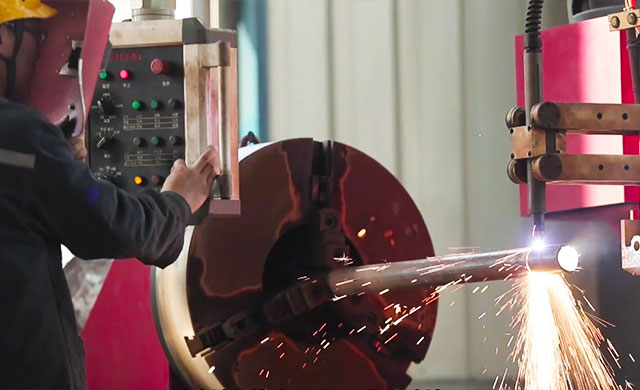
Dec . 07, 2024 12:12
Back to list
gas pressure vessel
Understanding Gas Pressure Vessels Safety, Design, and Applications
Gas pressure vessels play a crucial role in various industrial processes, from petrochemical manufacturing to food processing. These specialized containers are designed to hold gases at pressures significantly higher than atmospheric pressure. Their design, construction, and maintenance are vital for ensuring safety and efficiency in operations that rely on pressurized gases.
What is a Gas Pressure Vessel?
A gas pressure vessel is a container specifically engineered to hold gases under pressure. These vessels can be designed to accommodate different types of gases, including natural gas, oxygen, and various industrial gases. The design must account for the chemical properties of the gas, potential reactions, and the physical stresses correlated with high pressure.
Design Considerations
The design of a gas pressure vessel is governed by stringent standards and regulations. Key factors that influence the design include
1. Material Selection The materials used must withstand high pressures and the corrosive nature of certain gases. Common materials include carbon steel, stainless steel, and specialized alloys which can handle both the pressure and the chemical properties of the gas.
2. Thickness and Structure The walls of the vessel must be thick enough to withstand internal pressures. Engineers use calculations based on the gas type, operating temperature, and maximum allowable pressure to determine the appropriate thickness.
3. Safety Features Safety is paramount. Gas pressure vessels often come equipped with pressure relief valves, burst disks, and other safety mechanisms to prevent over-pressurization. Regular inspections and maintenance are also critical to ensure these safety features are operational.
4. Thermal Considerations Many gas pressure vessels are subject to temperature fluctuations that can affect integrity and performance. Insulation and temperature control mechanisms are often necessary to maintain optimal conditions.
gas pressure vessel

Applications
The applications of gas pressure vessels span various industries
- Petrochemical Industry In this industry, gas pressure vessels are used for the storage and processing of gases such as ethylene and propane. The ability to manage high pressures is crucial for the efficiency and safety of chemical reactions.
- Healthcare Medical gases, like oxygen and nitrous oxide, are stored in gas pressure vessels for use in hospitals and clinics. Ensuring the integrity of these vessels is critical for patient safety.
- Food and Beverage Carbon dioxide and nitrogen are often used in packaging and processing food products. Gas pressure vessels ensure that these gases are stored safely and delivered accurately during production processes.
- Energy Sector Natural gas storage relies heavily on gas pressure vessels. With the growing emphasis on natural gas as a cleaner energy source, efficient and safe storage solutions are increasingly important.
Safety Regulations and Standards
Due to the potential hazards associated with high-pressure gases, numerous regulations govern the design and operation of gas pressure vessels. Organizations such as the American Society of Mechanical Engineers (ASME) have established codes that operators must follow. Compliance with these regulations ensures that vessels are designed, constructed, and maintained to the highest safety standards.
Conclusion
Gas pressure vessels are integral to various industrial processes that require the safe storage and management of gases at high pressures. Their design involves careful consideration of materials, structural integrity, safety features, and regulatory compliance. As industries evolve and technologies improve, the importance of advanced gas pressure vessel design and safety will continue to grow, ensuring safe and efficient operations across numerous applications. Understanding and implementing best practices in the field of gas pressure vessels is essential for maintaining safety and efficacy in any gas-dependent industry.
Latest news
-
Safety Valve Spring-Loaded Design Overpressure ProtectionNewsJul.25,2025
-
Precision Voltage Regulator AC5 Accuracy Grade PerformanceNewsJul.25,2025
-
Natural Gas Pressure Regulating Skid Industrial Pipeline ApplicationsNewsJul.25,2025
-
Natural Gas Filter Stainless Steel Mesh Element DesignNewsJul.25,2025
-
Gas Pressure Regulator Valve Direct-Acting Spring-Loaded DesignNewsJul.25,2025
-
Decompression Equipment Multi-Stage Heat Exchange System DesignNewsJul.25,2025

